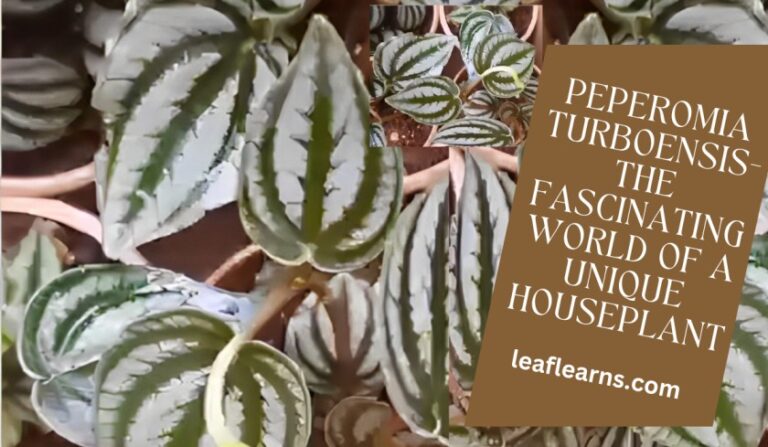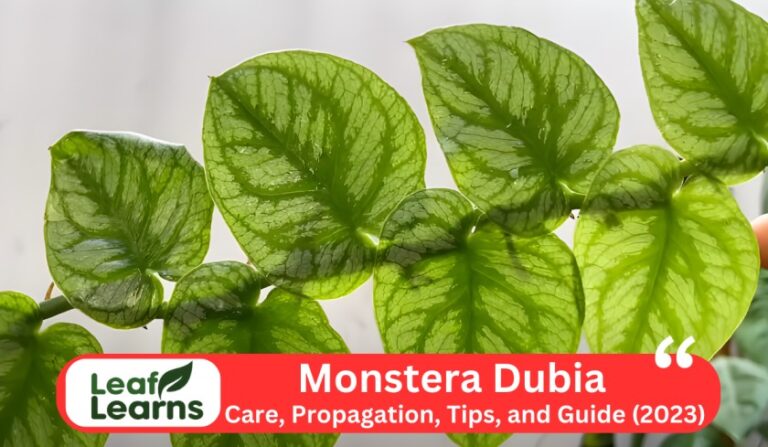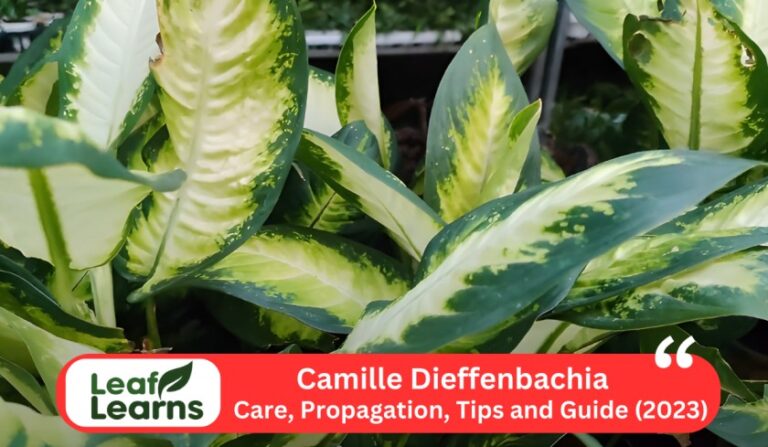Piper Crocatum (2024)
Piper plants, like Piper Crocatum and Piper Ornatum, are fascinating additions to any plant lover’s collection. The Plants, originating from South America, are known for their green and unique shapes. The lovely Piper-Crocatum, known as the Celebes Pepper Plant, is very special because of its looks. It’s quite a rarity, having originated from Peru. Its shiny, amazing leaves astonish the viewer, having a wonderful olive-green color with pink spots and veins.
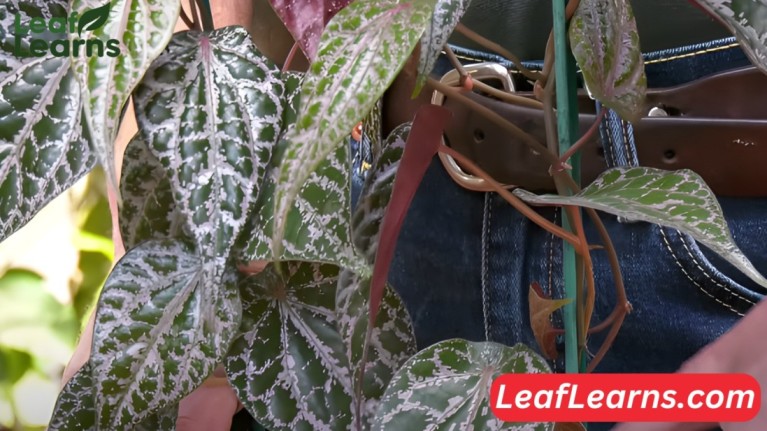
It is Piper Crocatum stunning appearance that makes it go beyond the ordinary in the eye of the beholder. They have bright green leaves patterned with fine pink veins, you can’t take your eyes off it.
But the lower layers with their purple luster give the impression of the world being more beautiful. In contrast to the other peppers, Piper-Crocatum is purely decorative. Its foliages have a minute, crystal clear sparkling effect on them giving an irresistible charm.
| Feature | Description |
| Common name(s) | Celebes Pepper Plant, Piper Plant, Ornamental Pepper Plant, Angostura Vine |
| Scientific Name | Piper Crocatum |
| Family | Piperaceae |
| Origin | Peru and South America |
| Plant type | Vining |
| Size | Up to 6 feet (1.8 meters) long |
| Lifespan | Indeterminate (with proper care) |
| Flower | White, small, and inconspicuous |
| Light | Bright, indirect light |
| Water | Keep soil moist but avoid overwatering |
| Soil | Well-draining, rich potting mix |
| Temperature | 65-85°F (18-29°C) |
| Humidity | High humidity preferred (50-70%) |
| USDA Zone | Not applicable (indoor plant) |
| Fertilizer | Balanced liquid fertilizer during growing season (spring-summer) |
| Propagation | Stem cuttings in water or soil |
| Pruning | Pinch tips to encourage branching and control size |
| Pests | Aphids, mealybugs, spider mites |
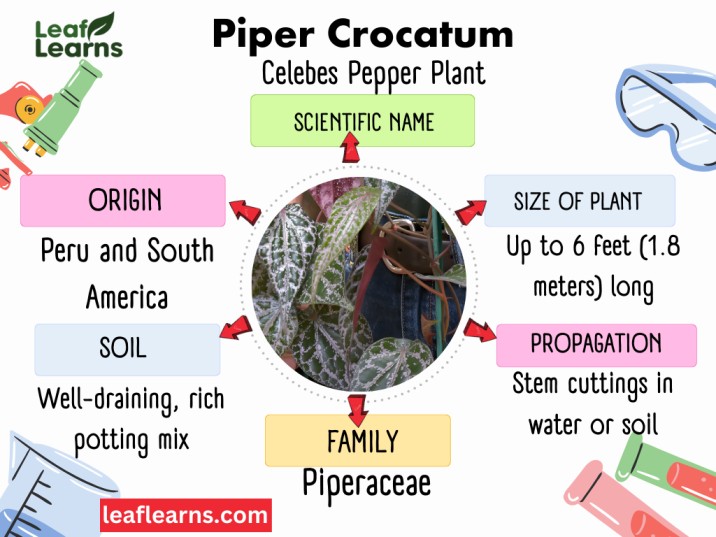
Contents
- 1 Piper Crocatum Care
- 2 Piper Crocatum Propagation
- 3 Piper Crocatum Crystals
- 4 Piper Crocatum vs. Piper Ornatum
- 5 Growth Rate and Size
- 6 Piper Crocatum Flower
- 7 Common Pests and Diseases
- 8 Pest Control with a Celebes Pepper Plant
- 9 Is Piper Crocatum toxic to cats and pets?
- 10 Why is my Piper-Crocatum dropping leaves?
- 11 Essential Plant Care Practices for Piper Plant
- 12 Understanding Identification and Selection of Piper-Crocatum
- 13 Conclusion
- 14 FAQs
- 14.1 What is Piper Crocatum?
- 14.2 What are the clear balls in Piper Crocatum?
- 14.3 What are the crystals in Piper Crocatum?
- 14.4 What is the fruit of Piper Crocatum?
- 14.5 What is the benefit of Piper Crocatum?
- 14.6 What is the common name for Piper Crocatum?
- 14.7 Why is my Piper Crocatum dying?
- 14.8 What type of plant is a Piper Crocatum?
- 14.9 Does Piper Crocatum need humidity?
- 14.10 What light does Piper Crocatum need?
- 14.11 What family is Piper Crocatum in?
- 14.12 Are Piper Crocatum easy to care for?
- 14.13 Where is the Piper Crocatum natural habitat?
Piper Crocatum Care
Piper Crocatum Light requirements
See the floor of a woodland, dappled by the sun. That’s your Piper’s perfect light. It’s ideal to have bright, indirect light next to an east or west facing window. Steer clear of the intense noon heat as it may burn its fragile leaves.
How often do you water Piper Plant?
Consider “moist, but not mushy.” When the top 1-2 inches of soil feel dry, deeply water, but do not let the soil become too wet. The plant’s enemy, root rot, is caused by overwatering. If at all feasible, use rainwater or filtered water.
Soil mix requirements
The mixture must drain properly. Potting mix, perlite, and orchid bark work well together to promote drainage and aeration. Consider it your plant’s roots’ opulent spa
Temperature Requirement
In your house, strive for a tropical paradise. Ideal temperatures range from 65 to 85°F (18 to 29°C). Keep your Piper away from draughty spaces and abrupt temperature changes.
Piper Plant Humidity Requirements
It loves conditions with high humidity. Create a moisture-rich micro climate by grouping plants together, using a pebble tray, or using a humidifier. Picture a soft mist from a rainforest stroking the foliage.
How often should I fertilize my Crocatum plant?
Feed a balanced liquid fertilizer to your Piper once a month during the spring and summer. Half the strength should be used to prevent overfeeding. Consider it as a vitamin injection for bright, fresh growth.
Potting Requirement
Select a container whose drainage holes are just a little bit bigger than the root ball. Every 1-2 years, repot your Piper into a slightly bigger pot as it grows. To be healthy, the soil has to be fresh and drain properly.
Piper Crocatum Propagation
Choosing Your Method
Stem cuttings: This is the most common and effective method. Select healthy stems with at least 2-3 nodes (leaf bumps). Cut just below a node, making a clean angled cut.
Leaf cuttings: It is possible to propagate from single leaves, however this is less typical. Select robust leaves and trim them off, leaving a tiny segment of stem intact.
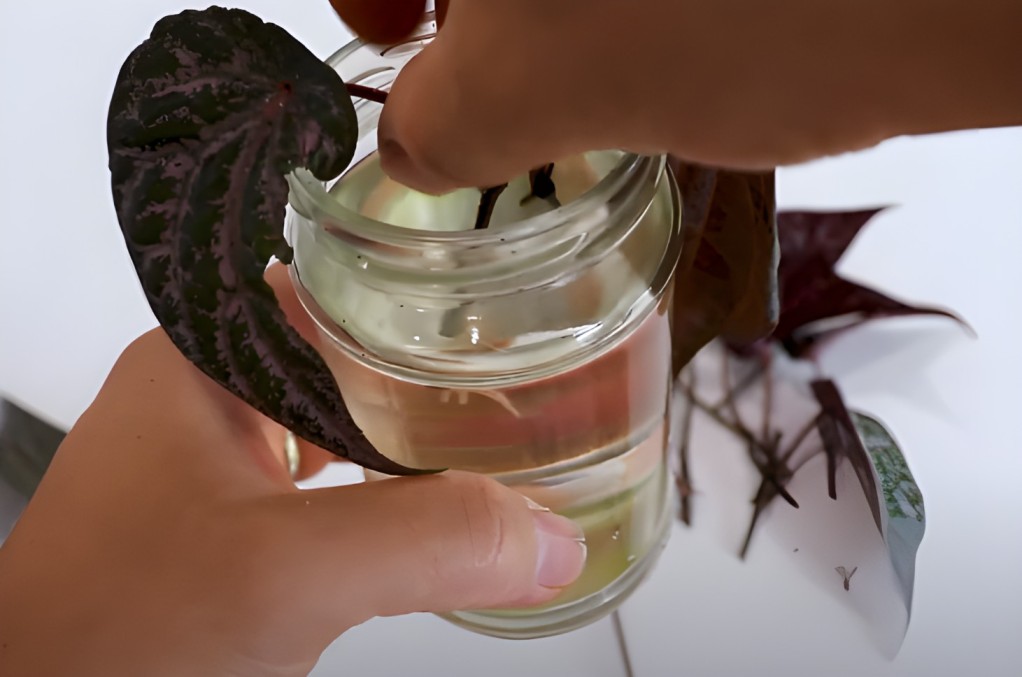
Water Propagation
- Pour some warm, filtered water into a sanitised container.
- Make sure the node is immersed when you submerge the stem or leaf cutting in the water.
- Regular water changes will help avoid stagnant situations.
- It should be possible to detect roots emerging in a few weeks.
- After the cutting has formed its roots, which should take about one to two inches, move it into a container filled with potting mix that drains well.
Soil Propagation
- Get a pot ready and fill it with houseplant-friendly potting mix that drains properly.
- If using a stem or leaf cutting, dip the cut end in rooting hormone.
- Make sure the cutting is buried shallowly in the container when you plant it.
- Keep the soil damp but not drenched by giving it plenty of water.
- The pot should be placed in a warm area with indirect, bright light.
- Patience is crucial during rooting, since it may take many weeks.
Piper Crocatum Crystals
In addition to its eye-catching variegated leaves, the Piper-Crocatum has little, crystal-like structures on the undersides of its leaves. But don’t worry these aren’t dangerous vermin.
The plant uses these “crystals,” which are technically known as exudate, as a means of getting rid of extra sugar that is created during photosynthesis.
Consider them the sweet sprinkles of nature but for plants. At first, they could seem clear, but over time, they oxidize and become innocuous black spots that are simple to remove.
Piper Crocatum vs. Piper Ornatum
The striped leaf design on these two gorgeous Piper species is similar, frequently leading to mistake. But these variances become apparent when you look more closely.
Piper Ornatum has a brighter green base, whereas Piper-Crocatum’s leaves are more pronouncedly pink.
Moreover, the undersides of Crocatum are a striking purple, whereas Ornatum is a paler hue.
Lastly, Ornatum lacks the distinctive ability that Crocatum possesses to form the previously described sugar crystals. Use these clues to spot the real treasure the next time you come across a striped piper.
Growth Rate and Size
Growing 6–12 inches of new growth annually, the Celebes Pepper Plant is a moderate grower.
Because of its climbing ability, it is perfect for moss poles and trellises, where it may grow up to 6 feet tall. Regular trimming, however, can manage its size so that it fits in the area you have set aside.
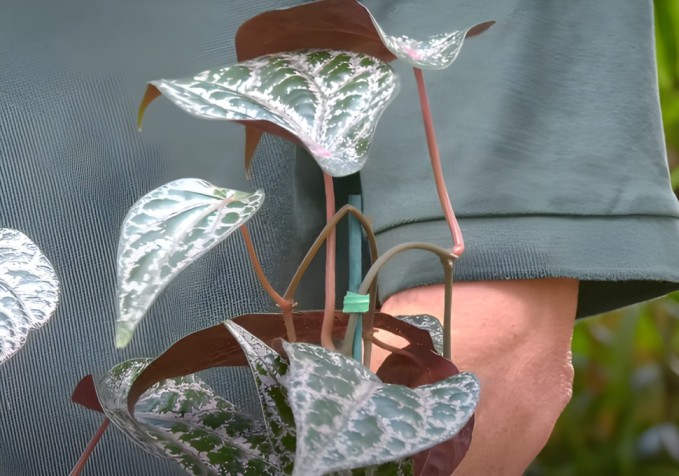
Piper Crocatum Flower
The Crocatum Plant does produce little white flowers, but its foliage really steals the show. These blossoms, nevertheless, are quite subtle and frequently concealed by the foliage. Therefore, if you miss this brief flower show, don’t give up.
Common Pests and Diseases
Aphids, mealybugs, and spider mites are among the frequent pests that the Crocatum plant, like other houseplants, can fall victim to.
Keep an eye out for any indications of pest activity on your plant and take quick action by using neem oil or insecticidal soap.
Additionally, to prevent fungal illnesses like root rot, make sure that sufficient drainage is maintained and do not overwater. Your Piper will flourish and keep delighting you with its unique appeal with proper maintenance.
Pest Control with a Celebes Pepper Plant
Thankfully, keeping your plant pest-free is achievable with proactive measures.
Early detection is essential. Check your Piper-Crocatum frequently for indications of infestation, such as small crawling insects, stippling on leaves, or webbing. Aphids, mealybugs, and spider mites are common offenders.
First, natural remedies: Try natural solutions for small infestations, such as soap sprays with insecticidal properties or neem oil. When used properly, these treatments are safe for plants and pets.
Specific intervention: Consider utilising insecticidal treatments designed especially for houseplants if natural techniques don’t work. Prioritise pet safety by keeping them away from the area both during and after application, and always pay close attention to the directions.
Preventive actions: Continue to provide ideal growth environments. To stop the spread of pests, make sure there is enough air, don’t overwater, and isolate newly planted areas.
Is Piper Crocatum toxic to cats and pets?
It has a minor toxicity that can affect cats and other pets. If consumed, piperine, an irritant found in the leaves and stems, can produce nausea, vomiting, and oral irritation.
Why is my Piper-Crocatum dropping leaves?
Leaf loss in your Piper Plant can indicate various issues. Here are some common culprits:
Problems with watering: Leaf drop can result from both over watering and under watering. Make sure the soil drains well, and when the top inch feels dry, water it thoroughly.
Unbalanced light: Your plant may become stressed by too much or too little light. Steer clear of direct sunlight and instead use strong, indirect light.
Concerns about humidity: This tropical plant prefers high humidity levels (50–70%). Think about routinely spraying or using a humidifier.
Problems with temperature: Make sure the temperature does not exceed 65–85°F (18–29°C). Steer clear of drafts and abrupt temperature fluctuations.
In case of nutrient deficit, use a balanced liquid fertilizer on a monthly basis during spring and summer.
Diseases and pests: Eliminate illnesses or insect infestations, as these can also be the cause of leaf drop.
Essential Plant Care Practices for Piper Plant
When cultivating Piper-Crocatum, proper plant care and maintenance are essential for optimal growth and health. Understanding the plant’s specific needs, such as its ideal soil composition, humidity levels, and light requirements, is crucial.
Piper-Crocatum thrives in well-draining soil with good aeration, making a mixture of peat moss, perlite, and potting soil an excellent choice. Monitoring humidity levels and providing adequate watering without water logging the soil is essential to prevent wilting and root rot.
Additionally, using a moss pole can support the plant’s climbing habit, promoting healthy growth and preventing leaves from dropping prematurely. Regularly checking for pests and ensuring the environment is pet-safe are also vital aspects of caring for Piper-Crocatum.
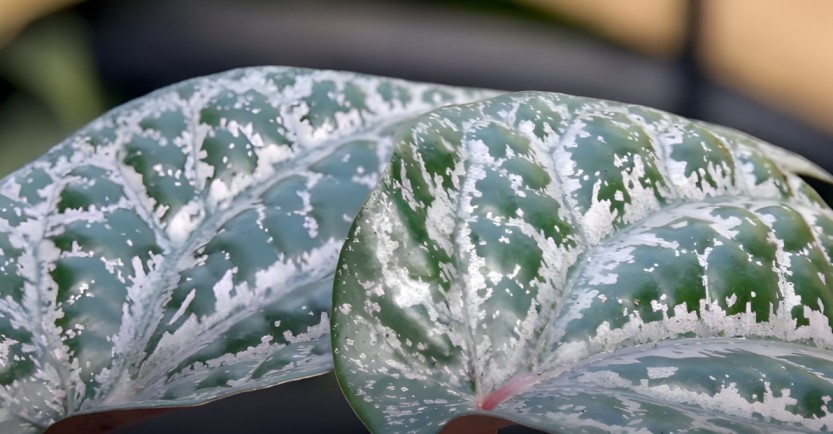
Understanding Identification and Selection of Piper-Crocatum
When considering purchasing or propagating Piper Plant, it’s important to be familiar with its identification and description. Descriptions of the plant’s characteristics, such as its scientific name, common name, and any ornamental features like variegation or colored spots, aid in proper recognition and selection.
Understanding the various varieties and characteristics available, including pink or variegated varieties and those with unique crystal formations, allows enthusiasts to choose plants that suit their preferences and aesthetic tastes. Whether buying from a seller or propagating from existing plants, ensuring the safety of the plant, particularly concerning its toxicity to cats, is paramount.
Through careful attention to plant care, informed purchasing decisions, and consideration of propagation methods, enthusiasts can enjoy the beauty and diversity of Piper Plant in their homes or gardens.
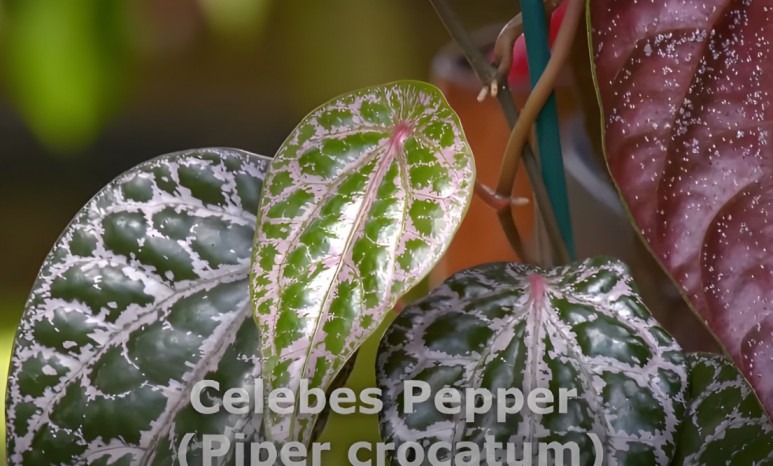
Conclusion
The exquisite tropical Piper Plant requires particular maintenance to thrive. Fulfilling its needs guarantees exuberant development, from its preference for indirect, sun-dappled light to its necessity for an opulent soil mix.
Achieving a balance between humidity and watering requirements helps avoid frequent problems like root rot, and maintaining a temperature that closely resembles its natural habitat will produce an ideal environment for this unusual climber.
FAQs
What is Piper Crocatum?
Celebes Pepper Plant is a gorgeous vining houseplant with purple undersides and variegated leaves. It is related to pepper plants, however it does not bear edible fruit.
What are the clear balls in Piper Crocatum?
Exudate is what’s within the transparent balls of Crocatum leaves. These are innocuous crystals formed by the plant excreting extra sugar.
What are the crystals in Piper Crocatum?
The “crystals” you see are the same as the clear balls mentioned above exudate. They are natural and harmless.
What is the fruit of Piper Crocatum?
The edible fruit is not produced by crocatum plant. Although it is related to pepper plants, the fruit is tiny, decorative, and inedible.
What is the benefit of Piper Crocatum?
In addition to its lovely leaves, Piper-Crocatum brings a tropical flair to your house and enhances the quality of the air by absorbing carbon dioxide.
What is the common name for Piper Crocatum?
Popular common names include Celebes Pepper Plant, Piper Plant, Ornamental Pepper Plant, and Angostura Vine.
Why is my Piper Crocatum dying?
Over- or under watering, improper lighting, low humidity, temperature problems, pests, or nutritional deficiencies are some possible causes. Consider its needs while making adjustments to its care.
What type of plant is a Piper Crocatum?
This vining houseplant is a member of the Piperaceae family and is not to be confused with spicy fruits.
Does Piper Crocatum need humidity?
Yes, it thrives in high humidity (50-70%). Use a humidifier, pebble tray, or group plants to increase humidity.
What light does Piper Crocatum need?
It prefers bright, indirect light. Avoid direct sunlight, which can scorch its leaves.
What family is Piper Crocatum in?
Piper Crocatum belongs to the Piperaceae family, sharing relatives with pepper plants and kava.
Are Piper Crocatum easy to care for?
Compared to other vining plants, Piper-Crocatum is comparatively easy to care for if light, water, humidity, and temperature are all managed properly.
Where is the Piper Crocatum natural habitat?
It comes from South America and Peru’s tropical areas, where it grows well in warm, humid conditions beneath dense forests.



